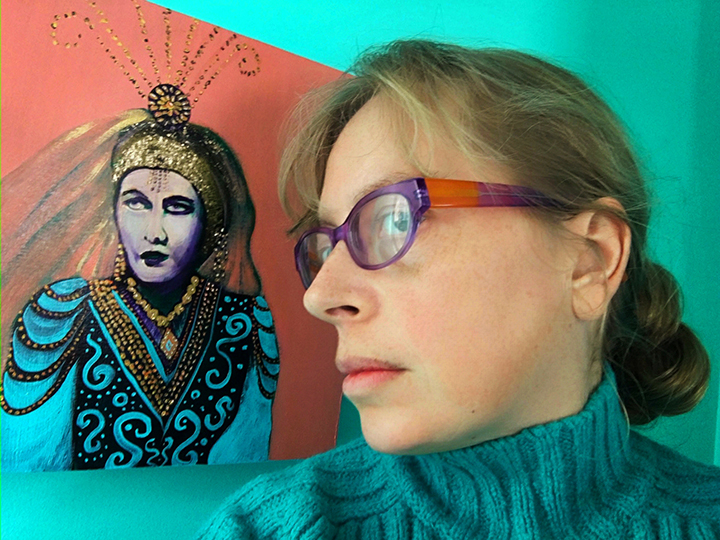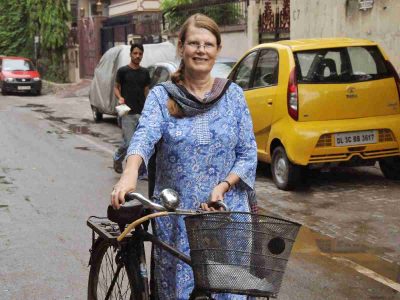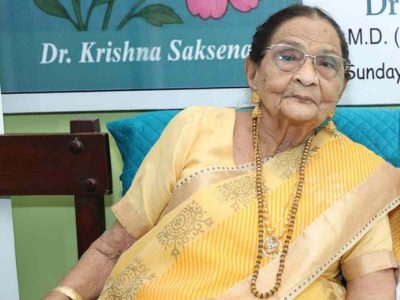Daisy Rockwell, well-known translator, opens up about her interaction with poet and scholar AK Ramanujan, the cultural milieu of the mid-20th century and her love for Hindi-Urdu literature
A translator of South Asian literature in Hindi and Urdu, Daisy Rockwell’s works are well known. She has worked on the writings of Upendranath Ashk, Yashpal, Khadija Mastur and Krishna Sobti. Granddaughter of the legendary painter Norman Rockwell, Daisy herself also paints. She is also the author of The Little Book of Terror, a volume of paintings and essays on the global war on terror, and a novel titled Taste.
Translating is not an easy job, it can be tedious and demanding. You, however, are known to enjoy it, also you have on multiple occasions mentioned how A K Ramanujan helped you in honing your skills, tell us something about it.
My interactions with Ramanujan were brief, but influential. I took a seminar on translation with him at the beginning of graduate school, and would have studied with him beyond that if he hadn’t tragically passed away not long after. Translation is something one learns to do by doing, and even after translating many books, I still feel I am in the process of learning. Ramanujan had a way of handing out pearls of wisdom, bits of advice clearly and succinctly expressed, that you’d remember forever. One thing I remember him pointing out was that if one is translating something long, one has the opportunity to teach the readers certain words in the language of origin. I was working on a long novel, and he, of course, specialized in translating short Tamil poems, where he really didn’t have that luxury. I can still hear him making that observation in my head, even though it was over twenty-five years ago, and I have, in my mind, expanded on that particular pearl of wisdom for my own philosophy. I always allow myself to teach the non-Hindi or Urdu speaking readers a few words, not too many—just enough—but only if I think they are necessary. My choices may be idiosyncratic, but I always have a reason for my choices. I have been accused by readers and reviewers alike of retaining both too many and too few words from the original language. From this, it is impossible to tell if my belief in this principle and my technique for carrying it out are successful or not, but I persist, nonetheless. Ramanujan gave the example of the great Russian novels, teaching readers words for certain Russian food items; he pointed out we just grow accustomed to them, because we can tell they’re eating, so what of it? And of course that was before Google existed to help us out if we wanted to find out what was being consumed. An example from my own work: In older Urdu novels, and some Hindi, people spend a great deal of time sitting on a takht. This is a word that I have chosen not to translate, because it would just be misleading or overly wordy. A platform? That sounds like a train station. But from context, you can tell it’s not on the floor, and it’s a surface where multiple people can gather to eat, sleep and socialize. It has bolsters and a sheet or spread.
Your interest and exploration of the Hindi cultural milieu and literature of the 40s and 50s is conspicuous. What made you select works from this particular period to work on?
Perhaps an accident. The first few novels I read in Hindi were set in that time period. I became fascinated with the Partition after reading Yashpal’s Jhutha Sach. I wrote my dissertation about Ashk’s novels, which are all set in 1930’s Punjab. Who can say how one becomes drawn to a particular type of literature? We have mysterious affinities. Over time, it snowballs. My knowledge of geography, architecture, urban landscapes, politics, literature, linguistics from that time is very thorough by now. It’s a niche, and I’m not sure how I ended up occupying it, and have at times tried to escape, but I always end up falling back in with my familiar haunts.
You have translated the works of male as well as female writers, how do you think their gender plays a role in their depiction of similar political realities?
If you really spend time focusing on women’s writing, not just in one language or literature, but in general, you begin to realize how much our worldview is shaped by male perspectives. I strongly urge everyone to try it. Challenge yourself to make the next ten books you read, doesn’t matter the language, era, nationality, books written by women. I am not making an argument that women’s literature possesses some essential universal qualities that men’s literature lacks so much as that misogyny and patriarchal power structures exist in most cultures and time periods all around the world, and you can only start to really process that by not reading books written from a male perspective. As a translator, I face very different challenges translating works by women. The most noteworthy of these is that women write much more about family relationships, and in Hindi and Urdu, they of course use a vast array of kinship terms that don’t exist, or exist differently in English. The network of relationships can be very confusing to an outsider, and my challenge is how to draw the reader in and help them acclimatize to this way of seeing and naming within families and communities without scaring them off (and making them feel I am teaching them too many new words!).
The pandemic has affected daily life, even making it claustrophobic for many. In light of this, how do you think readers will perceive novels like Khadija Mastur’s ‘Angan’ (Women’s Courtyard) and Krishna Sobti’s ‘A Gujarat Here and a Gujarat there’?
Well, The Women’s Courtyard is of course the most apropos to quarantine, since it is a novel about being stuck at home (for years!), as the world outside slowly deteriorates. A Gujarat Here, A Gujarat There is actually about leaving home and exploring the world, about endless possibilities unfolding before your very eyes. Of the other works I’ve translated, Falling Wallsis also quite claustrophobic, although the main character is male and can freely move about the city at all times of night and day. Nonetheless, he is trapped in his family, his worldview, his caste, etc. I actually think often of Khadija Mastur’s work whilst in quarantine, because the life of a traditional Muslim woman at that period in history is fairly similar to what we experience through social distancing (without necessarily stifling patriarchy in our homes). Avoid contact with outsiders, stay inside as much as possible, cover up when you go out, don’t linger, don’t talk too long, stay out of sight if someone comes to the door, etc.
How do you see Indian literature in Hindi taking shape now? How has it changed and in which direction?
Hindi literature is in a constant state of efflorescence. I use this fancy word because Hindi literature, that is, literature written in Modern Standard Hindi, is an extremely young art form. It started out defining itself as not-Urdu, and fused in some way with numerous Hindi-adjacent language literatures, such as Braj Bhasha, Awadhi, Bhojpuri, and so on. This has made it a literary language with a massive scope for variation and it blooms and blossoms on and on like a wild jungle vine. It can be difficult to read Hindi literature, because you never know what will come next. Each author may choose to invent their own literary language, their own poetry, their own worldview. It is demanding, confusing, variegated, and endlessly fascinating. It grows in myriad directions all at once, and I, for one, have no idea where it will end up next.
You are an author and a painter too. How are writing and painting different from translation?
I think I have elsewhere quoted Robert Frost as saying that free verse was like playing tennis with the net down (and therefore, in his view, totally unappealing). Writing and painting are to me like playing tennis with the net down, whereas translation is tennis with the net up. I don’t actually play tennis or even particularly enjoy it, but I still like the metaphor. I like to translate when I want structure and clarity and pure creative expression feels difficult to grapple with.
There are sceptics who say translation often destroys the original work because the cultural context of a certain idiom, phrase and word may get lost in translation. What do you have to say to them?
I sigh and roll my eyes. Life is full of translation. Human expression is a form of translation. We translate every time we open our mouths and express our inner thoughts and feelings to another human being. Of course a translated work is not the same as the original, but does that matter? It is a new work that carries over what it can from the old. One should not view a translation as an imperfect representation of a superior and unattainable original. Read translations as original works and you will be much happier. People always obsess about what is lost in translation. It has become a cliché. Of course things are lost in translation! But is that bad? They might not have even been good things. And much is gained in translation. A translation is an interpretation, a refraction, a reworking, and as such it contains something old, but also contains something new.
Finally, tell us about your next project and what have you been doing during this lockdown?
I have been learning how to make bread, like many people, and I also learned how to ferment dosa batter! I discovered that the temperature in a Vermont kitchen is much too cold, and I have to create the conditions of a South Indian kitchen, by heating my oven to 100 F to jumpstart the fermentation. Fermentation is definitely a form of translation. But I also have been finishing up my translation of Geetanjali Shree’s latest novel, Ret Samadhi, a very demanding project indeed, that has pushed me to my limits of tennis-with-the-net, and some tennis-without-the-net, as well. She’s reading a draft right now, so I don’t know how the story will end, but in the meantime I will paint and bake.
(Cover: Apart from being a well-known translator of South Asian literature, Daisy Rockwell is also a painter and an author Photo: jllitfest.org)





